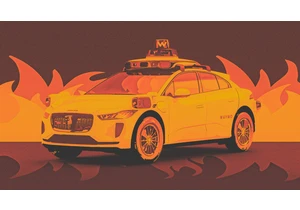Advances in artificial intelligence (AI) are impacting every area of life, as well as every aspect of business, as I illustrate in my latest book. Among the most prominent and consequential examples is talent identification, with a growing number of organizations, and the majority of large employers, using some form of AI to improve their recruitment and personnel selection systems.
But, how good are AI-based technologies at identifying job-related potential, especially compared to human intuition? There is research on the various technological tools for assessing candidates’ talent and predicting their future suitability for a job. This represents one of the fastest growing areas in industrial and organizational psychology. And there is a well-established body of knowledge on the pervasive nature of human biases in recruitment, that would suggest that AI could be better than humans at evaluating job seekers’ potential.
Here’s what we know right now.
AI is better at detecting true signals of potential
Assessing potential is always about probability—making a bet on someone’s likelihood to perform well in the future. Assuming there are some patterns connecting what candidates do (e.g., during an interview, assessment, cover letter) to what they are likely to do once they are hired, then we can also assume that AI will be better than humans at identifying such patterns. What’s more is that it can do so consistently. Unlike humans, AI does not have happy, sad, anxious, or hangover days.
As science shows, AI can accurately translate the words we use into a reliable estimate of our personality, values, and intelligence, as well as identifying language patterns that signal narcissism.
Since humans are focused on the content of language, they are not able to track these patterns as AI does. Video interviewing algorithms can link nonverbal communication, body language, and physical speech patterns to signals of potential, which human interviewers cannot do, without being also influenced by content, and physical appearance factors they should ignore. The same goes for scraping your digital footprint, which AI does better than humans, because humans are still unconsciously influenced by appearance.
AI is better at ignoring false signals of potential
Although humans are very good at learning, they are very bad at unlearning. In contrast, AI is good at both learning and unlearning. And, unlike humans, AI can be taught to ignore all the demographic and socioeconomic background variables humans can never unlearn.
No matter how much unconscious bias training a well-meaning, open-minded, empathetic human undergoes, they will never be able to ignore that the person in front of them appears to be female, male, white, Black, rich, poor, attractive, unattractive, old, young, etc.
Empathy is what prompts us to feel more warmth and positive feelings for people who are similar to us, so it’s more likely a problem than solution to diversity and inclusion. Everything that inclusive, fair, and diverse organizations are trying to ignore, in order to improve both the equity and meritocracy of its hiring, is pretty much everything humans love to attend to when they have another human in front of them.
We can train AI to be blind to all the factors that have historically disadvantaged individuals and underrepresented groups. AI provides a cleaner and purer approach to quantifying human potential, decontaminated by noise and irrelevant demographic variables.
AI is faster, cheaper, and more scalable
Even if AI was merely as accurate as humans, if not a bit less, it has many advantages in terms of cost, speed, and scalability. Indeed, human recruiters and hiring managers can only process so many applications and candidates in a given day, but AI has economies of scale and is equally applicable to one or one million job seekers.
The real benefits of AI, both in terms of cost and accuracy, kick in when there’s a large volume of candidates, and this is also where AI introduces huge advantages in terms of fairness and diversity.
AI can increase fairness and diversity
The same employers that complain that they cannot find the right talent are still looking for talent in the same old players, and in the same old ways. AI can help by widening the potential pool of applicants, increasing the size of the prehire market by including passive candidates (people who do not formally apply, but show signs of being a potential fit for the job).
If you are interested in increasing diversity, having the ability to look at more people, and to de-emphasize hard skills and college credentials to instead focus on soft skills and potential for the future, is significantly advantageous.
Though AI has been found to replicate human biases, and there’s no shortage of examples of algorithms going rogue or because they are trained on corrupted and biased human preferences, you can reverse engineer AI’s algorithms to understand which parameters are causing the bias, and how to retool or edit the algorithms to increase accuracy and fairness.
In contrast, the human brain is always a black box algorithm, in the sense that we can never be sure why someone, including ourselves, decides to hire or not hire someone. Transparency is therefore more likely achievable with artificial than human intelligence.
AI is more likely a complement than replacement for human expertise
Although public discussions of AI love to pitch it against human skills, such dichotomy is really a fallacy, since AI itself is a human creation. So, even when we find that AI outperforms human intelligence, that is still counts as an accomplishment by human intelligence.
Given the versatility and adaptability of human intelligence, it can always pivot to find new ways for adding value, even as AI learns to replicate some of its capabilities. Recruitment is a perfect example for this. As AI learns to decode reliable patterns between candidates’ profiles and their future performance, selecting in and filtering out the right candidates in very large datasets, AI frees up humans to focus on the humane tasks AI cannot master.
For example, selling the job to candidates, connecting with them on an emotional level, and helping hiring managers understand what they need, which is often different from what they want. This is how technology can augment humans, and humans can augment technology. Paradoxically, then, technology can help us humanize recruitment.
It’s important to acknowledge that none of the potential advantages mentioned above should be taken for granted, and that careful attention needs to be paid to ensure that AI is ethical by design, addressing not just legal, but also moral concerns.
Ensuring that candidates are properly briefed, that they opt in with consent, that their data are protected, and that there is a clear benefit for them, including an improvement over the status quo, will help us to leverage the AI opportunity while mitigating its potential risks.
Autentifică-te pentru a adăuga comentarii
Alte posturi din acest grup

Social media users have been having a field day with Waymo’s autonomou

If you’re not on TikTok, you may not have heard of Aaron Parnas. But for many young people across the U.S., he’s a prominent political news source, with over 3.5 million followers on TikTok and ju

Getting a sense of the scale of social media platforms can be tricky. While tech companies often share self-serving metrics—like monthly active users or how likely users are to buy products after


Fun fact: The saying “work smarter, not harder” is coming up on its 100th birthday. Coined

If you’ve followed Apple for any length of time, you’ve no doubt come across the notion that the company doesn’t rush into adopting cutting-

Every now and then, you run into a tool that truly wows you.
It’s rare—especially nowadays, when everyone and their cousin is coming out with overhyped AI-centric codswallop tha
